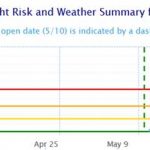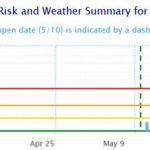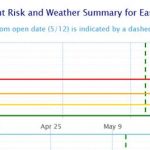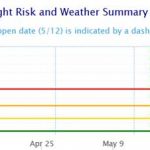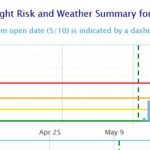Despite my sheepish warning in my last post, it appears that we are in a high risk period for fire blight infection in Champlain Valley and other warmer orchard sites with open blossoms this week. The charts below were generated using a best guess date for the start of bloom and the “fire blight occurred in your neighborhood last year” setting in NEWA. High risk indicates a need for treatment if wetting occurred (and in most sites it did or will), extreme risk indicates that streptomycin application is required to prevent infection. Of course this assumes that you have a local population of the infective bacteria Erwinia amylovera in or near your orchard, and that you have open susceptible blossoms. Adjusting the model to “no fire blight in your neighborhood last year” drops all sites down one category (I.e., from “Extreme” to “High”, or “High” to “Caution”), so adjustment based on historical disease occurrence may be appropriate. Application of strep, especially to highly susceptible cultivars, is recommended at this time for site with high or especially extreme risk. Strep will protect blossoms for 24 hours before and after application, so an immediate spray will cover for yesterday’s and tomorrow’s wetting events. Organic growers may apply Serenade or Double Nickel to reduce fire blight infection, although neither is as effective as strep, which was removed from the approved list of organically-acceptable materials in 2014.
This is also a good time to consider Apogee application to reduce vegetative shoot growth, which could be excessive in this potentially low-crop year. Apogee has no effect on blossom blight, but is effective in reducing the severity of shoot blight symptoms. Dr. Nikki Rothwell recently presented a good summary of use of Apogee in orchards in Michigan which is appropriate for Vermont growers as well.


